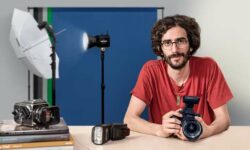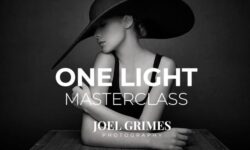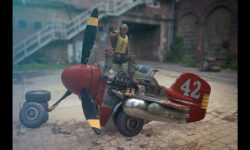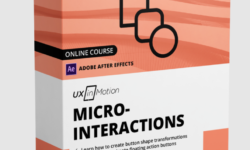Night Photography Fundamentals
Release date:2017, November
Author:Gabriel Biderman
Skill level:Beginner
Language:English
Exercise files:Yes
The fundamentals of photography. Now, we really have to have a really, a good base understanding of the basics of photography, so, I’m gonna talk about some things. Maybe you might understand them. But guess what? Some of the easiest things that we take for granted during the day, like focus, and like exposure, they get flipped over, and they’re super challenges during the night. So, we’re gonna go over some basics. We’re gonna build upon on that, and how we can use those creatively at night. Now, really, we’re gonna be in manual mode. And, I like to call this section mastering manual mode. Often times during the day, we’re shooting, at least I shoot during the day, at times, aperture priority, ’cause I’m thinking about depth. That’s my main concern, is, how do I see? Is there shadow depth? Or do I want a lot of depth in the scene? But at night, there’s different factors. And if I were to say anything, it’s more we’re thinking of time, and how to manipulate it. But we can juggle the three main factors of exposure, which are ISO, aperture, and shutter speed. Those are the three building blocks that fill up our cup of light that makes up exposure. So, how do we juggle them? The consideration for that, that’s gonna be how. And we’re gonna do that, not in any of the program modes. It’s best to learn in manual mode. So, here’s how we’re gonna master that manual mode. First off, we’re gonna shoot in raw. You’ve probably heard this from every photography class. They’re always telling you to shoot in raw. It’s an unprocessed file, but it is a bigger file. It’s a bigger and richer file. And we can manipulate it more, or play with it, stretch it out, you know, really pull out shadows and get a lot more information, if we’re shooting raw. We’re gonna monitor our meter a lot. Most of us look through the viewfinder, and we’re so excited, what we see in the scene, that we forget about those little numbers going across or over the screen there. And these are things that we have to pay attention. When we monitor our meter, we’re gonna want to get to that. There’s usually, in the middle, there’s a zero, which means average. We’re gonna wanna play around that section most of the time. Now, it could be hard for us to gauge that. And guess what? In the dawn with the digital age, there’s a thing called histogram, and histograms help. They help us see our shadows and our highlights. And if we’re crushing those shadows, or if we’re blowing out those highlights, we’ll want to usually keep a nice average exposure in there. But, definitely, the night is full of extremes. And we’re gonna let go of some highlights, and we are gonna create some nice, dark, rich shadows as well. But let’s break it down with the ISOs, apertures, and shutter speeds. So, let’s first talk about ISOs. Now, ISOs, that is your film speed; that is your image quality. Lower number ISOs are richer, cleaner colors. Higher ISOs, those will make the sensor more sensitive, and we can see better in low light, to sometimes really dark scenarios. So, here’s an image I shot. Same shot. The image on the right is a clean shot, shot at the lowest number ISO: ISO 200, for this camera. The image on the left is the higher ISO. It was shot at 6400 ISO. Look at how smooth and clean that ISO 200 image is compared to the more granular version of the image on the left. That’s what happens. We get more noise with these higher ISOs, and it looks like grain. Sometimes this grain can be just gritty and plain, but other times that grain can be speckled full of red, blue, and purple dots. And we really, for the most part, want to avoid those noisier, higher ISOs. Now, what is your camera capable of? And what are your limitations? Everyone of us can look at images and have a different limitation. I could be comfortable shooting my D750 at 6400 ISO. But, Matt, whose got the same camera, he might be like, “You know what? “I have a different take. “I really like things clean, “and I’m not gonna go higher than 3200 ISO, personally.” Test your camera. Get to know your camera and what its capable of, and give it the high ISO test. So, here we have, this is actually shot with the Sony A7S2, which claims to be the best high ISO camera. So, here we have a breakdown of my living room. And we see three shots. Same shot. One shot at 3200 ISO. The other one: 6400 ISO. And the other one’s 12800. Those are full stop differences between those ISOs. When we take these test shots, you can do them in your home, in your hotel. What we’re looking to photograph, there has to be some shadow area in there. Noise appears in the shadows first. So, we want to take a look when we take that picture. Maybe it’s a desk, and the shadow underneath. For here, I was looking at that shadow created by the chair, and also the pillow. That blue pillow has dark and white areas on it. But I’m really paying attention, that shadow cast, right under the chair there, which, to me, of all three of these images, that looks pretty clean. We’re starting to note a slight color shift at 12800 ISO, but it’s still clean and sharp enough that I would consider using that ISO. So then we went three more stops. We went to 25,600, 51,200, and 102,400. Now, and I’ll tell ya, Sony A7S even goes beyond this. But, really, this is where I’m starting to notice, for me, the image quality is starting to degrade. I could get away with that 25,600, which is still two stops more than most cameras can get. But, really, 51,200, we’re starting to see the grain really pop up a little bit more, it’s starting to get gritty, and we’re starting to get sort of that smooshy detail. We’re starting to lose detail. And when we lose detail, we lose sharpness. When we lose sharpness, we’re losing image quality. So, we want to keep that image quality to a premium. So, really, test your camera, and find out how high it can go, and what your comfort level is. That way, when you get out in the field, you’ll be able to be, “Okay, I know I can go up to 6400 ISO. “This is where I can play.” And I can drop it down for cleaner ISOs. But we need to know the extremes of the playground that we can play in. Now, apertures. Apertures, for me, it’s funny. I said, during the day, I’m always thinking depth. And I’m definitely thinking depth during the night, but I’m often also shooting wide angle lenses. And wide angle lenses inherently have more depth than telephoto lens. So, a 5.6 on a wide angle lens, especially a super wide angle lens like the 14 to 24, is gonna give just as much depth as a f/16 on, like, a 50 millimeter or 85 millimeter lens. So, I can get more depth by using the wider angle lenses. But there’s definitely some other considerations with apertures. The main one to think about is what it does with direct light sources. I love bridges, and I take a lot of bridges, take a lot of photographs of bridges. They’re out there. They’re usually over water, and they make wonderful reflections. And a great way to do it, of course, is at dusk or at night. But try shooting a bridge at like 2.8 for f/4, as we have, again, that image on the right. That is shot with, I think it’s wide open at 1.4. So, notice all the lights along the bridges. It’s full of the sort of, it’s out of focus. I was focusing on that piece of wood before we get out into the water. It does create this very, sort of cinematic and bocalicious, dreamy scene. But those lights are kind of, especially on the bridge, they’re a little bit blurry and smudgy, so to speak. A cool effect that we can get when we stop down our apertures with direct light sources, is it creates this star effect, with, again, those direct light sources. We can see a big difference between the two images. When I stop down to f/16, we see those points along the bridge. And now they are smaller points of light. So, they have star points on it, that kind of make for an interesting shot. The more you stop down your aperture, the more star points you’ll get. I kind of like to play around with f/11 and f/16. When I get to f/22, there’s too many star points, and then it’s becoming about that, and not about the rest of the scene. We can also see in that image on the left, that by stopping down the aperture, I had to go with a longer exposure, and we got smoother water. I mean, I love both these images, and each one has a different sort of effect on you. But you need to understand, again, your camera and your lens, and what it’s capable of, so you can go to the scene, and either get both of these shots, or you know what you’re gonna get, and take it, because you have a good foundation of what the aperture can do. We talked about direct light sources. And if you don’t have a bridge in your town, guess what? Almost everyone has got a streetlight. And streetlights are also something we want to control with our aperture. Here’s shot in my neighborhood, in Brooklyn. Again, shot for shot right here. Shot wide open at 2.8. And that streetlight is very bulbous. It’s a blob of light in the sky. Not that appealing to look at. And, I’ll tell ya, I don’t need to, and it’s an extreme white as well. So, it’s drawing our eyes into the scene. I’m not trying to find the wattage on the light bulb. I don’t need to do an extreme HDR picture on this. But I am concerned, when looking at this image, what that streetlight, the light that its shining on. And when I reviewed this in my image, I was getting the highlight blinkies, not only on the streetlight, but on the ground and the white building across the street. I wanted to retain detail on those buildings, but, again, I don’t need to see the filament in the bulb. So, I stopped it down. This was about at one stop overexposed. I stopped it down with my aperture to create that star effect with the streetlight. And we got that. Now, you will notice, when these direct light sources happen, when we stop down our aperture, we do generate more flare. So, we could see that little piece of flare right above the streetlight. Well, I went in there and removed it post. And that was an easy one to do, and there was no way about it. I was gonna have to just embrace that flare. But, again, it was sort of just up in the sky, and that was an easy thing to clone out. But, again, much more appealing streetlight with it stopped down. This was, I believe, at f/11, that it was at 2.8. So, that’s how we can handle those streetlights out in the city. Now, the third factor, and the most fun factor to kind of play with, is shutter speeds; time. How can we bend it? How can we play with it? We’re using these remotes and releases. Like I said, every camera goes to 30 seconds, but we want to go beyond that. And when we get to these darker areas, these more rural locations, that’s where we can kind of play with the time, because there’s not much light. This is a funny story. This was shot in Baja California. I hadn’t followed any of my rules. I hadn’t scouted location. But I heard water. And it was pure darkness when I got to the hotel. So, I kind of went out with my camera, and my tripod, and I’m flashing my flashlight throughout, to just kind of see what was out there. I almost, like, went over a ledge there. So, you gotta definitely be careful. But as I was shining my flashlight, I picked up these crosses up on this hill, and I was like, “Boom. That’s my shot.” I went in. And this was my high ISO test shot. But at 6400 ISO, and, generally, I wasn’t really happy with the image quality of this particular camera at 6400, but I really loved the effect. And this was my first test shot at that. But we can play with these star points, or we can play with these star trails. So, again, two different ways. Once I got that set up, I then ripped a long exposure. This was about a 15-minute shot. So, again, two different ways to interpret this scene. And I invite you to play with both, until you figure out which one you like better, or, I guess you never have to decide. You can always embrace them both. But let’s take a look at how time also plays, and really get a better understanding of how time effects the scene. Now, guess what? We’ve got clouds. And clouds make up a big part of our sky. Every night, unfortunately, isn’t a beautiful starry night. And this was, again, this is in Brooklyn, so, I’m not seeing many stars anyways. And I’m gonna take you through how the seconds and minutes look like, so, we can kind of get a sense of how we can play with time. This is a one-second exposure. That’s a two-second exposure. That’s a four-second exposure. We’re starting to see a little movement in the clouds. That’s eight seconds. They’re starting to kind of lose their shape. 15 seconds. 30 seconds. We’re getting more of that sense of movement. There’s 30 seconds. I like that one. I like that one too. That’s a minute. And this is about a four-minute shot right here. And you’re like, “Well, Gabe, what’s going on here?” “That shot, previously, I could see the clouds “and the movement. “But now, at four minutes, things are starting to smear.” And, listen, I’m from New York. The only kind of smear that I want is on my bagels, okay? So, if we want to keep our clouds from smearing, we really have to understand how fast they’re moving. But a general rule of thumb, I’ll tell ya, and how windy it is, a general rule of thumb, I’ll tell you, is you don’t really want to go much beyond four minutes. This was a fairly windy night, so I would cap, I would’ve probably done my test and cap it at two minutes. But four minutes is, generally, you don’t want to go much beyond that, unless you’re gonna just get that white, white, sort of uninteresting sky. Let’s take a look at all of them again, so we can kind of see which ones that we like best. So, I actually, these were interesting clouds. I like those shorter exposures. Sometimes ripping those long, it’s not always about the longest exposure. Really understand and evaluate the scene, see what’s moving, and how we can best, either contain it or manipulate it to create some sort of, something that we can’t see with our natural eye. So, natural eye kind of shots are those first four or five shots. But something that we can’t see is more of those, that one-minute, two-minute shots, and they have, definitely that essence of movement to it. And playing up against that bridge too creates a good effect. Now, let’s also see how we can, what stars look like with different exposures. Generally, we’re keeping our star points, it’s gonna be a shutter speed no more than 15 to 30 seconds. But when we want to do star trail photography, things really start to get interesting when we get into the minutes. And, so, I have four different, the same shot at four different exposures. The first one is four minutes. The second one is eight minutes. The third one is 15 minutes. And the last one is 30 minutes. Now, I think we all, kind of, are drawn to, probably, that longer exposures here on this one. But notice the four-minute shot, you’re seeing more stars. You’re seeing more stars in that shorter exposure, than those longer, brighter stars on that 30-minute exposure. So, again, it is fun to get that epic star trail shot, but it doesn’t always have to be about those long shots. Sometimes you want to just show a little movement in the scene. And we want to show more stars. And we can get that with those shorter exposures. Now, if you want to learn about stars and how to bend time, and manipulate them into really cool star trails, you’ll want to take Lance Keimig’s astrophotography class, here at CreativeLive. Now that we have a better understanding of the foundation of photography, and the three factors that make up an exposure: ISOs, apertures, and shutter speed, how do we juggle them? How do we play with them? And which factors in more important than the other? Well, that juggle, as we call it, is called reciprocity. And reciprocity, it means relationship. The relationship between the three of those items is very key and paramount to understand and to play with. You’ll often hear me talk in one-stop increments. I’m gonna say, “You’re gonna move a stop up, “or you’re gonna move a stop down.” And that is fairly easy math to understand. You’re either doubling or halving. And those are easy to understand with ISOs and with shutter speeds. But apertures, well, those are fractions. And who here likes multiplying or halving fractions? Not me. So, really, with apertures; best to memorize those, and understand the full stop aperture increments. And understand that when I take a picture at 500th of a second, at 2.8, okay, my considerations for that, again, fraction of a second, 500th of a second, I am freezing time. 2.8, I’m gonna have shallow depth of field. We talked about depth, we talked about time. So, those are my two considerations there. I wanna capture a little action. Maybe someone running, and I wanna freeze them. So, that same cup of light, from 1/500th of a second, if I wanted to emphasize movement, I froze the person running, but now I want to see, like, a blur of them in motion. So, in order for things to start to get blurry, I need to go below 60th of a second. So, let’s say 15th of a second. That’s a nice sort of, we might get some sharpness, but we’ll get, definitely that emphasis of movement. So, let’s go full stop increments, letting in more light by going into a longer shutter speed. So, we’re gonna 500th of a second to 250th, is one stop. 250th to 125th is another stop. 60th of a second is three stops. Again, 30th of a second is four stops. And 15th of a second is five stops. So, by going to that slower shutter speed, we’ve now overexposed the image by five stops. So, we have to juggle that, throw that over, and let’s use our apertures first. We’re gonna add five stops to our apertures. Full stop increments. So, we’re gonna go 2.8 to f/4, f/4 to 5.6, 5.6 to f/8, f/8 to f/11, and then f/16. So, 15th of a second, at f/16, is the same cup of light, the same exposure, as 500th of a second at 2.8. I’ve taken away five stops of light, and I’ve added five stops of light. So, again, once you figure out our exposure, then we can start to juggle them, really, to play with what’s going on this scene, and what’s important. Is it depth? Is it movement? Or is it ISO? Now, in this next slide, I wanna kind of show you, so you don’t have to do the math. Here are your full stop increments for the most common ISOs, and the most common apertures, as well as the shutter speeds that our camera dial doesn’t necessarily show us. Most of shutter speeds one our dial will go down to 30 seconds, and then we’re in bulb. But, again, if we think on, if we just continue to either double or halve, it’s easy way for us to figure out and balance those exposures.



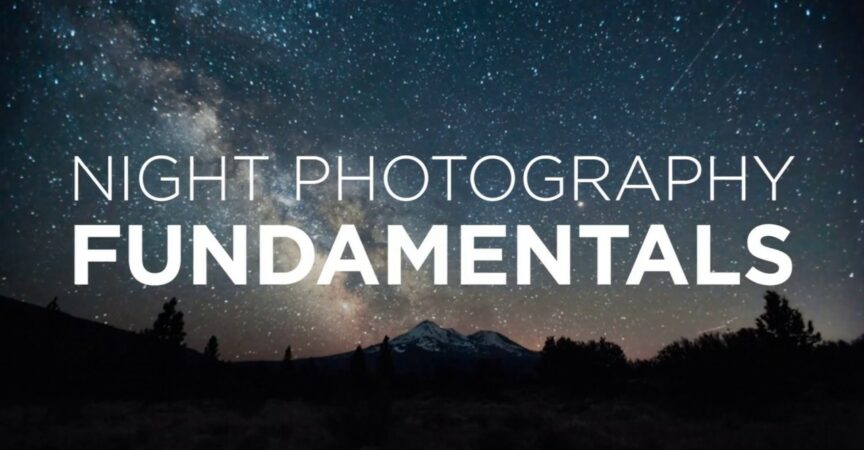

 Channel
Channel